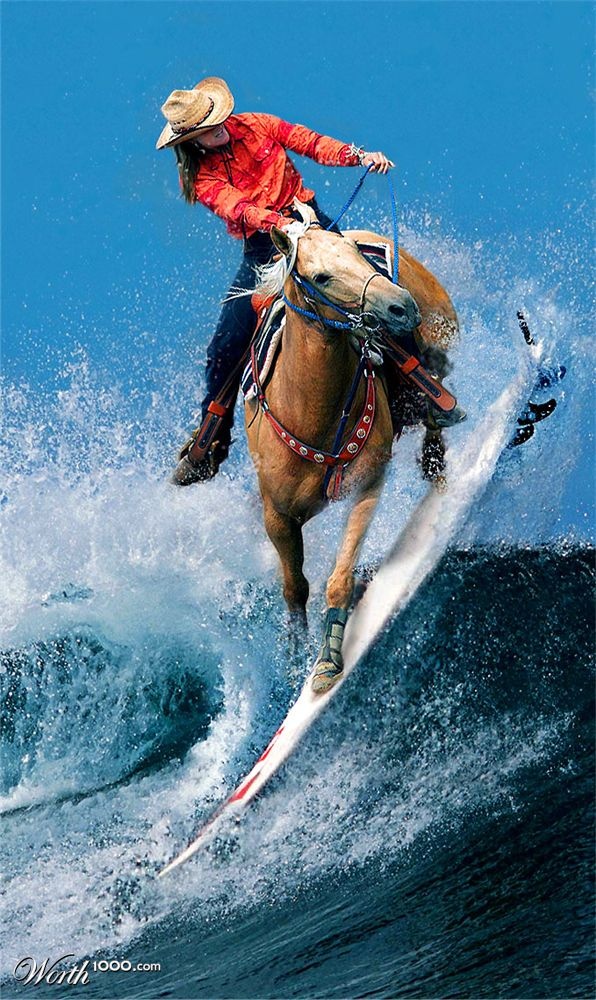Horse Surfing: Riding Waves on Horseback
Have you ever imagined combining the thrill of surfing with the majesty of horseback riding? Well, it turns out that this unique and exhilarating sport exists, and it’s called Horse Surfing. In this article, we’ll dive into the world of horse surfing, exploring its origins, the essential equipment needed, how to get started, and the challenges and joys that come with riding waves on horseback.
The Origins of Horse Surfing
Horse surfing might sound like a modern, out-of-the-box idea, but its roots trace back to the beaches of Ireland in the early 1970s. Legend has it that a group of equestrians, seeking an adventurous twist to their beach outings, decided to ride their horses into the surf. What started as a casual and spontaneous activity quickly evolved into a recognized and organized sport.
Essential Equipment for Horse Surfing
Before you grab your surfboard and saddle up, it’s crucial to understand the necessary equipment for horse surfing. First and foremost, a well-trained and experienced water-loving horse is indispensable. These horses must be comfortable in the water and have a calm temperament, as the ocean waves can be intimidating even for the most seasoned riders.
A specially designed horse surfboard, often broader and more buoyant than traditional surfboards, is the key to a successful horse surfing experience. These boards provide stability and balance, ensuring both the horse and rider can navigate the waves safely.
Getting Started: Tips for Horse Surfing Beginners
If you’re intrigued by the idea of horse surfing and want to give it a try, here are some tips to help you get started:
- Choose the Right Location: Opt for a beach with a gentle slope and consistent waves. Avoid crowded beaches to ensure a safe and enjoyable experience for both you and your horse.
- Wear Appropriate Gear: Just like traditional surfing, wearing the right gear is crucial. Invest in a good wetsuit, helmet, and other protective equipment to keep yourself safe during the ride.
- Start Slow: If you’re new to both horseback riding and surfing, take it slow. Begin with calm waters and gradually progress to more challenging conditions as you and your horse become more comfortable.
- Communication is Key: Develop a strong bond with your horse, and establish clear communication signals. Understanding your horse’s body language and responding appropriately is essential for a smooth horse surfing experience.
Challenges and Joys of Horse Surfing
While horse surfing offers a unique blend of excitement and connection with nature, it’s not without its challenges. Balancing on a moving board while guiding a horse through the surf requires skill, practice, and a strong bond between rider and horse. Unpredictable ocean conditions, such as strong currents and large waves, add an extra layer of complexity to the sport.
However, the joys of horse surfing are equally remarkable. The sensation of riding waves on horseback creates a harmonious connection between rider, horse, and nature. The adrenaline rush, combined with the soothing sounds of the ocean, makes for an unforgettable experience that horse surfing enthusiasts cherish.
Frequently Asked Questions (FAQs)
Q1: Is horse surfing safe?
A: Horse surfing can be safe when done with the right equipment, proper training, and in suitable conditions. It’s crucial to choose a well-trained water-loving horse, wear appropriate safety gear, and start in calm waters before progressing to more challenging conditions.
Q2: Can anyone try horse surfing, or do I need prior riding or surfing experience?
A: While prior riding or surfing experience can be beneficial, horse surfing is accessible to beginners. It’s essential to take lessons from experienced instructors, choose a suitable location, and start with gentle waves to build your skills and confidence gradually.
Q3: What kind of horse is suitable for horse surfing?
A: The ideal horse for horse surfing is one that is comfortable in the water, has a calm temperament, and is well-trained. Breeds such as the Irish Draught or Connemara, known for their versatility and water-friendly nature, are often chosen for horse surfing activities.

